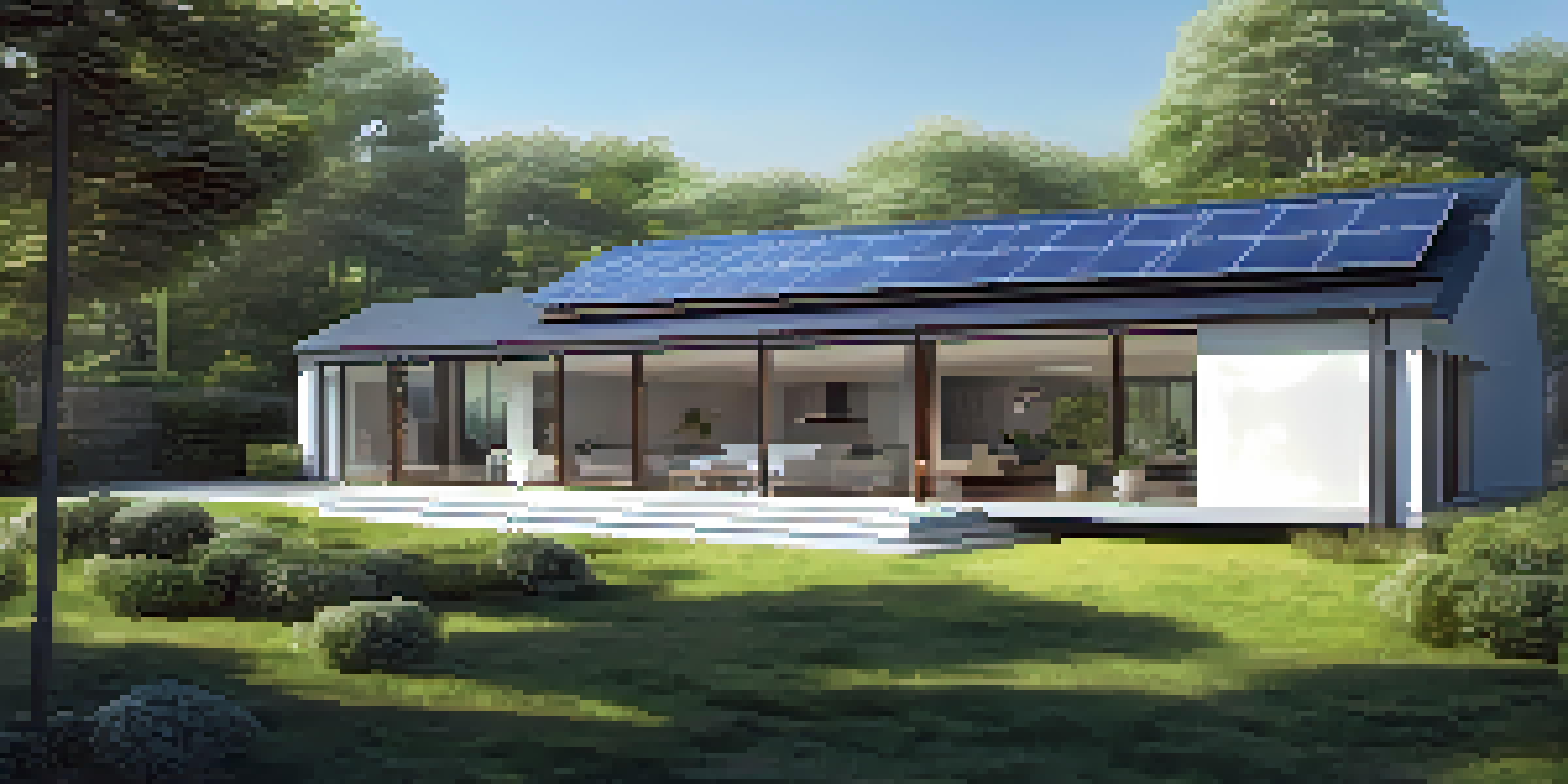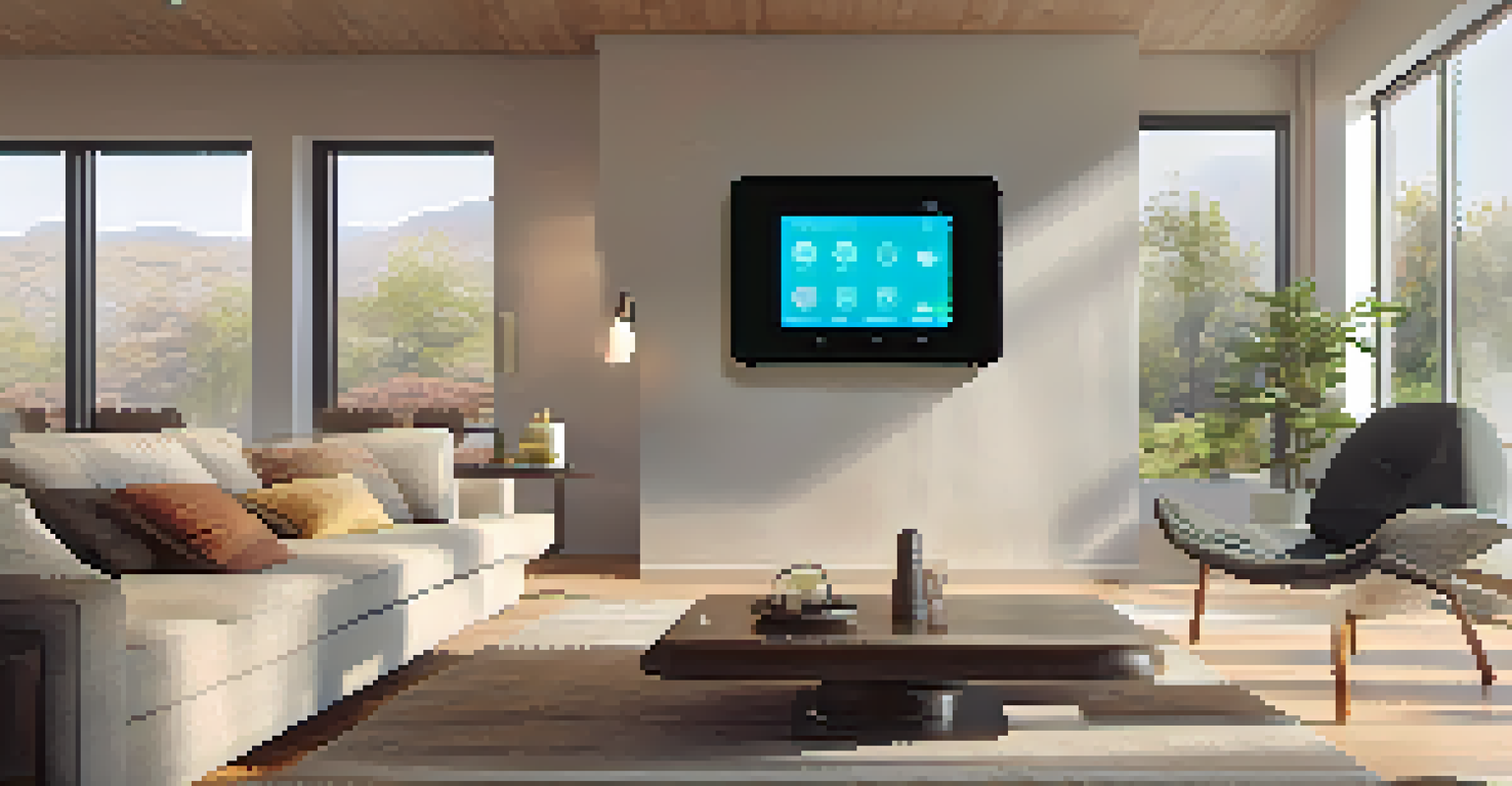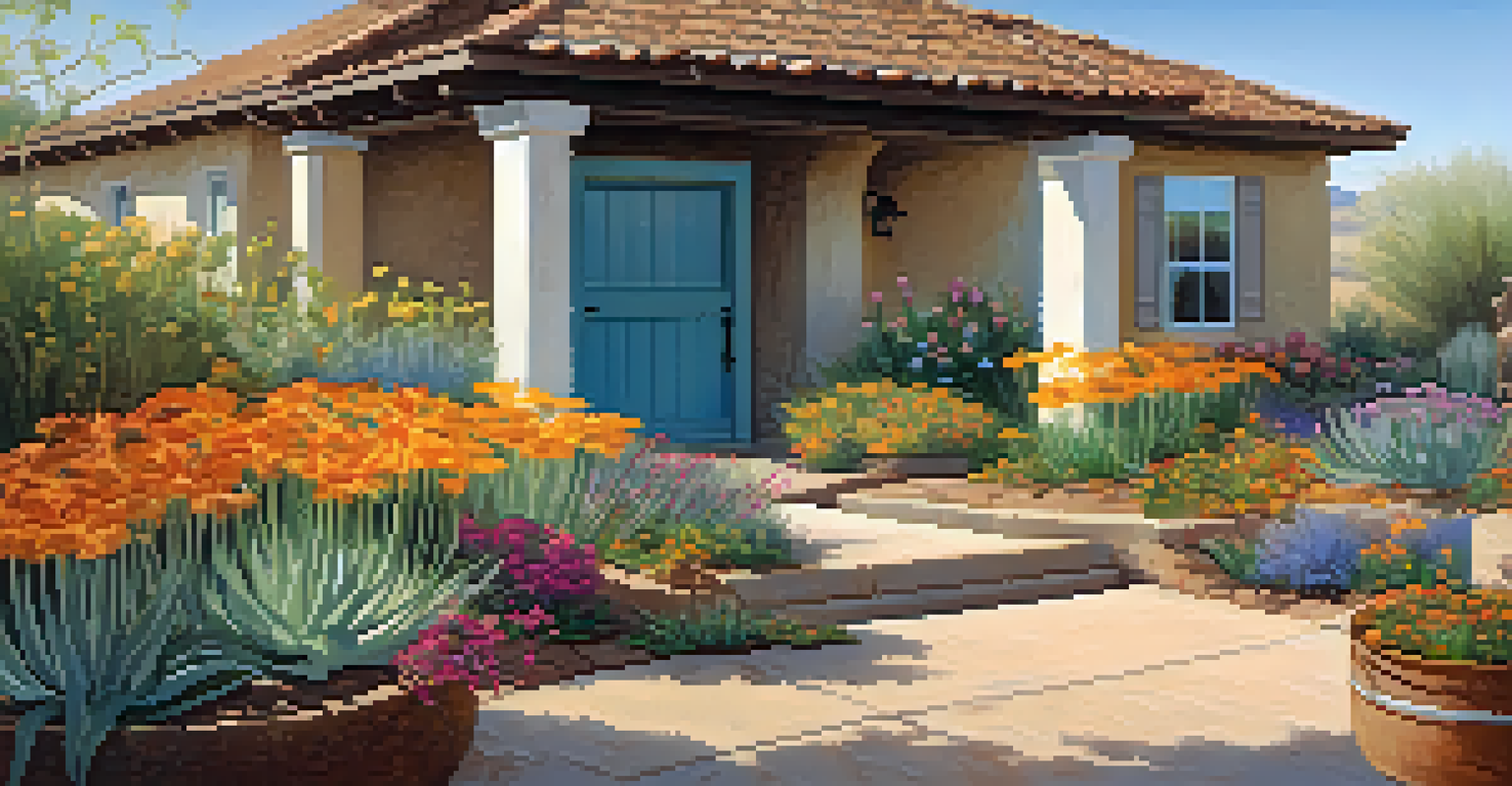Energy Efficiency: Future Trends in Home Energy Design

Understanding Energy Efficiency in Home Design
Energy efficiency in home design focuses on reducing energy consumption while maintaining comfort. It means creating homes that use less energy for heating, cooling, and lighting without sacrificing quality of life. For instance, an energy-efficient home might utilize superior insulation and energy-efficient appliances to minimize waste.
The greatest threat to our planet is the belief that someone else will save it.
This approach is not just about saving money on utility bills; it’s also about reducing the environmental impact. With climate change affecting our planet, energy-efficient designs can significantly decrease carbon footprints. Imagine every household making small adjustments that collectively lead to a cleaner environment.
Moreover, understanding energy efficiency can empower homeowners to make informed decisions when building or renovating. Knowing which materials and technologies to choose can lead to long-term benefits, both financially and environmentally. This knowledge is a key step toward a sustainable future.
The Rise of Smart Home Technology
Smart home technology is revolutionizing energy efficiency in homes. With devices that can be controlled remotely, homeowners can optimize their energy use in real time. For example, smart thermostats learn your schedule and adjust heating and cooling accordingly, ensuring no energy is wasted.

Additionally, smart lighting systems can be programmed to turn off when rooms are unoccupied, further reducing energy consumption. These technologies not only create convenience but also foster a greater awareness of energy use. It's like having a personal assistant that ensures you never leave the lights on!
Energy Efficiency Enhances Comfort
Designing homes to be energy-efficient reduces consumption while maintaining comfort and lowering environmental impact.
As smart devices become more affordable and accessible, we can expect their adoption to grow. This shift will likely lead to a future where energy efficiency is a standard feature in home design, rather than an afterthought. Embracing this technology means stepping into a more sustainable lifestyle.
Innovative Building Materials for Efficiency
The materials used in home construction play a crucial role in energy efficiency. New innovations are emerging that enhance insulation, reflect heat, and even generate energy. For instance, insulated concrete forms (ICFs) provide excellent insulation and strength, making homes more energy-efficient.
Energy efficiency is not just a policy issue; it is a matter of survival.
Recycled materials are also gaining traction, contributing to sustainability efforts. Homes built with these materials not only reduce waste but also lessen the demand for new resources. It’s like giving old materials a second chance at life while promoting responsible consumption.
As builders and homeowners become more eco-conscious, we can expect a surge in the use of these innovative materials. This trend not only supports energy efficiency but also aligns with a broader commitment to sustainability. By choosing the right materials, we can create homes that are both functional and environmentally friendly.
Passive Solar Design: Harnessing Nature
Passive solar design is an ingenious way to utilize the sun's energy without relying on complex technology. This method involves strategically placing windows, walls, and floors to collect sunlight and distribute heat throughout the home. Imagine a house that stays warm in winter and cool in summer simply by using the sun’s natural power!
Incorporating features like thermal mass and proper orientation can significantly reduce heating and cooling costs. For example, homes designed with large south-facing windows can capture solar heat during the day, which radiates warmth at night. It's a harmonious blend of architecture and nature's rhythm.
Smart Tech Boosts Energy Savings
Smart home devices enable homeowners to optimize energy use in real time, leading to greater efficiency and convenience.
As awareness of climate issues grows, passive solar design is becoming increasingly popular. This trend reflects a shift toward sustainable living, where energy efficiency is achieved through thoughtful design rather than technological dependence. Embracing passive design principles can lead to homes that are not only efficient but also beautifully integrated with their environment.
Energy Storage Solutions for Homes
Energy storage solutions are essential for maximizing home energy efficiency. With the rise of renewable energy sources like solar power, storing excess energy for later use becomes crucial. Home battery systems allow homeowners to store energy generated during sunny days for use in the evening or during outages.
This capability not only enhances energy independence but also provides a buffer against fluctuating energy prices. Imagine having a reliable power source that allows you to avoid peak electricity costs, giving you control over your energy expenses. It’s like having your cake and eating it too!
As technology advances, we can expect these storage solutions to become more efficient and affordable. This trend will further support the shift toward energy-efficient homes, making renewable energy accessible to a broader audience. Ultimately, energy storage is a game changer for residential energy management.
Water Conservation: An Essential Component
While the focus often lies on electricity, water conservation is equally vital for energy-efficient homes. Water heating can consume a significant amount of energy, so implementing systems that reduce water usage is beneficial. For example, low-flow fixtures and rainwater harvesting systems can help minimize water waste.
Additionally, landscaping with drought-resistant plants not only conserves water but also reduces the need for energy-intensive irrigation systems. It’s a win-win situation that enhances both the environment and your home's energy efficiency. Think of it as creating a beautiful garden that thrives with minimal resources.
Sustainable Materials Matter
Utilizing innovative and recycled building materials contributes to energy efficiency and supports a more sustainable home design.
As more homeowners recognize the importance of water conservation, we can expect to see it integrated into energy-efficient home designs. This trend reflects a holistic approach to sustainability, where every resource is valued and conserved. By focusing on water as well as energy, we can create truly sustainable living spaces.
The Future: Regulations and Incentives
Regulations and incentives are shaping the future of energy-efficient home design. Governments worldwide are recognizing the importance of energy efficiency and are implementing standards to encourage sustainable building practices. These include energy performance ratings and mandatory efficiency measures in new constructions.
Incentives such as tax credits and rebates for energy-efficient upgrades make it easier for homeowners to invest in sustainability. For instance, many states offer financial assistance for installing solar panels or energy-efficient appliances. It’s like having a little extra help to make your home more eco-friendly!

As these regulations evolve, we can anticipate a future where energy efficiency becomes the norm rather than the exception. This shift not only promotes environmentally responsible living but also enhances the quality of life for homeowners. By embracing these changes, we can contribute to a more sustainable future for generations to come.